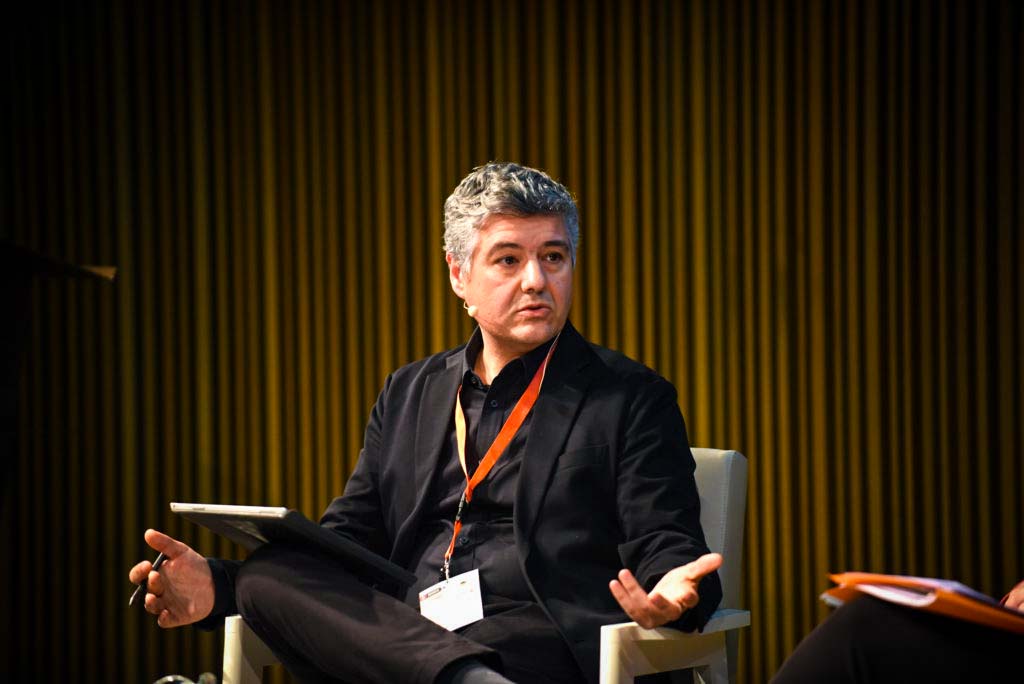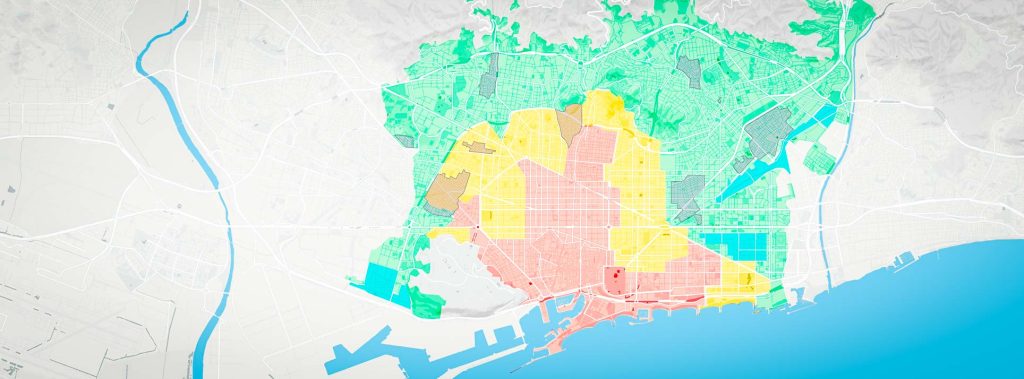Barcelona has long been plagued by housing issues. Now the city is fighting back. Equipped with an extensive plan, Barcelona wants to tackle a multitude of challenges. We sat down with the city’s housing manager Javier Burón Cuadrado, who walked us through their initiative.
The city of Barcelona is synonymous with high housing costs, touristification, and gentrification. But change is in the air. In 2016, Barcelona set out to address these issues: the Barcelona Right to Housing Plan 2016-2025 was born.
Javier Burón Cuadrado, Housing Manager of Barcelona City Council, led the team that drafted the plan and has since aided its implementation. We spoke to him to learn more about the housing plan and its holistic approach.
What’s the Problem?
Before Javier and the city of Barcelona started drafting the plan, it was crucial to get a clear picture of what exactly was wrong with housing in the city. They identified the following key issues:
1. Skyrocketing Rents
Barcelona has the highest average rent of any city in Spain. Comparatively, its residents spend the highest proportion of their income on paying rent. There are several reasons for this. One is tourism.
Who hasn’t dreamt of seeing the Basílica de la Sagrada Família, walking through Park Güell, or savouring some tasty tapas? Tourism in the Catalan capital is booming. As a result, housing has become a very desirable resource. The profits private property owners can generate from renting to tourists are about 2 to 4 times higher than those of regular apartments.
Due to the competition from tourism, housing costs have gone up. Residents are often outpriced and displaced. In certain neighbourhoods of the city, 25% of rental properties are used as holiday apartments.
Additionally, the influx of professionals attracted by the city’s booming economy drives housing prices up further. Demand exceeds supply.
2. Emptied Out
Interestingly – while competition for housing in Barcelona is high – several properties in the city lie empty. In 2019, about 1.2% of dwellings were vacant.
This is caused by speculation. Since Barcelona is a tourist magnet and housing is high in demand, buying property in the city is considered a great investment – an ideal way for investors to safely “park” their money. Bloomberg elaborates, “there has been a tendency for companies to neglect their portfolios [in Barcelona], thinking of them primarily as assets to be managed rather than an essential public resource”.
3. Missing Pieces
What is a common solution to high rents and speculation? A solid public housing stock. That’s what Barcelona is missing, however. Over the decades, Spain has subsidised homeownership, selling many public units to the market. When comparing OECD countries, Spain is among those with the lowest social housing stock.
4. Growing Old
Following a trend in Europe, it is estimated that in 2032 more than half of Barcelona’s population will be over 50 years old. To adapt to the needs of an aging population, many of Barcelona’s properties must be renovated. Accessibility needs to be guaranteed (e.g., by installing lifts), and housing affordability is yet again a problem; elderly people increasingly struggle to pay Barcelona’s rising rents.
5. Residential Exclusion
Barcelona faces further challenges, such as:
- homelessness,
- overcrowding,
- illegal occupation (squatting),
- energy poverty.
Let the Drafting Begin
Once Javier and his team had identified these issues, they began drafting the Barcelona Right to Housing Plan. Its main objective: tackle the above challenges and grant Barcelona’s residents the right to adequate housing. To achieve this, the plan is centred around four strategic axes:
- Preventing and addressing the housing emergency.
- Ensuring housing serves a social function.
- Increasing the number of affordable flats.
- Renovating the existing housing stock.
Here’s how Barcelona translated these axes into actions.
The Importance of Collaboration
A key ingredient to realising the plan, Javier reveals, was collaborating with various stakeholders, including residents. During the drafting stage, the city held extensive public meetings and participatory sessions and consulted relevant stakeholders from each of Barcelona’s ten districts.
When asked whether it was difficult to bring all the different actors together, Javier calmly replies that “joining together to collaborate in the drafting wasn’t that difficult,” and adds, “it was key to walk along with other people because we knew that we were going to need those people along the way.”
What Javier means is that Barcelona’s feeble public housing system needed to rely on non- and for-profit housing organisations to realise their vision.

Coordinate, Coordinate, Coordinate
In the early stages of the plan, Javier and the team founded the Municipal Institute of Housing and Renovation (IMHAB), which then became responsible for the plan’s implementation.
“When we were drafting the plan, the municipal institute to begin with didn’t exist because we had two and a half different public entities that were working in housing. What we did is we merged all of them in one, and now we have a single housing institute.”
It was a crucial step to ensure proper coordination. The whole city pulled together, and many different agencies and stakeholders united. As a team, the city got going.
From Axes to Actions: More Social and Affordable Flats
So, what concrete actions are Javier and his team taking? Javier is keen to highlight how much has been done to increase the number of affordable flats.
Under the plan, Barcelona resorts to “three main pillars” for growing its public housing stock:
1. Developing
Javier describes this as a shift “from almost all units for sale” to “no units for sale”. While before homeownership was incentivised, now all new units built will remain public.
Altogether, Barcelona plans to construct 8,000 new public rental properties. Of these, 80% will be available as social and affordable rents, Javier tells us. The other 20% will be assigned as long leases, i.e., occupiers can lease the units for 75 years, but the land on which the property stands remains with the municipality. When the lease runs out, the ownership of the property reverts to the city, which can then re-assign the unit at an affordable price.
The City is also partnering with non-profit social housing providers such as co-operatives and foundations through an innovative public-community framework agreement (Conveni ESAL) to develop 1,000 units on public land over the next 10 years.
Additionally, many new, affordable dwellings are to be constructed (and managed) by a novel public-private partnership called Habitage Metròpolis Barcelona (HMB). Public and private partners share the equities of new units fifty-fifty. The land on which the homes stand is public, and there are specific rules which ensure the units’ perpetual affordability.
2. Purchasing
However, Javier emphasises that constructing new homes is not the only solution. He highlights that it’s also important to take “into consideration the different purchasing powers that the administration has”. This is especially relevant in terms of distributing the social and affordable housing stock evenly across the city.
Javier tells us that in certain districts of Barcelona there is neither existing public housing nor space to build new dwellings. That’s why, under the Right to Housing Plan, 100% of the city’s territory was declared an area of pre-emptive purchase: if a dwelling enters the market, the municipality has the first right of purchase. Javier calls this “probably the most interesting new instrument”. He elaborates:
“We are trying to purchase as much as we can, in places where we don’t have stock and we won’t be able to build.”

3. Mobilising
The third pillar to increase Barcelona’s public housing stock is mobilising vacant units. On top of punishing landlords for long-term empty dwellings with high fines, the city of Barcelona now also has the right to purchase properties, that have not been let in two years, at half their market value. During the Covid-19 pandemic, this right was exercised by using vacant tourist apartments as temporary accommodation for low-income residents.
Speaking of holiday rentals: as part of the housing plan, the city will also redistribute tourist apartments.

Additionally, cooperative housing schemes will receive more support. The municipality aims to make legal proceedings easier, provide groups with subsidies and grants, and act as a guarantor when they want to take out mortgages.
On top of that, Barcelona’s residents can apply for rental subsidies and renovation grants. And they are protected from excessive rents via new rent control measures.
Lessons Learnt
See Numbers in Context
A little goes a long way. Barcelona is struck by many different issues – from touristification to housing affordability. That’s why Javier believes they can (and should) be proud of seemingly small achievements. Talking about the pre-emptive right to buy, Javier stresses:
“We have acquired already more than 1,200 units, which maybe for other public companies around Europe is not very relevant data. But in our case, it is important in terms of numbers because we are adding 1,200 new units to our sites. It is not irrelevant.”
There’s No Silver Bullet
Javier also emphasises that there is no single solution to fix housing in a city. It takes a lot of different approaches and stakeholders. The Barcelona Right to Housing Plan tries to work holistically.
“The idea is that there are no shortcuts. It will be a very, very long endeavour. And at the same time, there is not a silver bullet. There’s not a single programme or tool or instrument that by itself has the capacity to solve the problem; only a combination of different tools and different providers as well.”
Overcoming the housing challenge also requires the involvement of all levels of government and the joint responsibility of private stakeholders, Javier argues. Rent regulation is currently in effect in Catalonia and being debated in the Spanish Congress.
Crucial Advice
Javier is eager to share advice with others wanting to fix housing in their city. His top tip: create a learning network. Learn from best practices around the globe and be open to sharing your own experiences.
For the Barcelona Right to Housing Plan, Javier and his colleagues were inspired by Vienna, Amsterdam, Berlin, Paris, and other major cities. However, they are also in touch with various Spanish and Latin American cities, wanting to follow Barcelona’s lead. Javier explains:
“This idea of learning from the European champions, and at the same time sharing our knowledge with our colleagues here in Spain and abroad, and trying to develop tools and programmes together, is crucial for us.”
Barcelona’s Housing Strategy in a Nutshell
The Barcelona Right to Housing Plan 2016-2025 aims to improve housing in a city struck by numerous issues. Identifying these issues, collaborating with the public and stakeholders, and ensuring proper coordination were the first crucial steps towards implementing the plan. Javier and his team have already taken further steps, however. They have been massively expanding Barcelona’s public housing stock by developing, purchasing, and mobilising new units. Along the way, they have learnt two valuable lessons which they are happy to share with others:
- Be proud of small achievements.
- Develop a holistic plan. If there are multiple issues, you will need multiple solutions.


